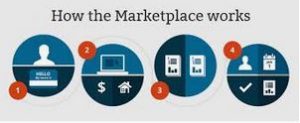Cost-Sharing Reductions

Cost-Sharing Reductions is one of two affordable health insurance options provided by the federal government (the other is Premium-Tax Credit). This option will help low and moderate income families who are not eligible for other programs to limit out-of-pocket costs, such as deductibles or coinsurance under their Qualified Health Plan (QHP) coverage.
Cost-Sharing Reductions Eligibility
The following eligibility criteria must be met to be eligible for cost-sharing reductions:
- Be eligible to enroll in a Qualified Health Plan (QHP)
- Meet the requirements for eligibility for a Premium Credit Tax
- Have an annual household income at or below 250% of the Federal Poverty Level (FPL)
- Be enrolled in a Silver-level QHP
Calculating the Cost-Sharing Reductions
Cost-Sharing Reductions are based on annual household income and family size.
For individuals and families with income below 250% of the FPL, their out-of-pocket maximum for a Silver plan (not including the premium) will be below the standard out-of-pocket maximum ($6,600 for individual and $13,200 for a family in 2015). In particular:
- for people with income from 100% to 200% FPL, the annual out-of-pocket maximum is $2,250 per individual and $4,500 per family
- for people with income from 200% to 250% FPL, the annual out-of-pocket maximum is $5,200 per individual and $10,400 per family
- for people with income above 250% FPL, the annual out-of-pocket maximum is the standard maximum, i.e., $6,600 per individual and $13,200 per family
Table 1 shows the out-of-pocket maximum for the Silver plan for a family of four depending on the percentage of the FPL. FPL equal to $24,250 is assumed (2015). The table is for states that approved Medicaid expansion.
Table 1 also displays the increased Actuarial Value. Actuarial value is the percentage of medical costs the plan covers. A lower out-of-pocket maximum result in increased actuarial value. The actuarial value of the Silver plan (70%) is increased as follows:
- At 400% of FPL, the Silver plan covers 70% of medical costs
- At 250% of FPL, the Silver plan covers 73% of medical costs
- At 200% of FPL, the Silver plan covers 87% of medical costs
- At 150% of FPL, the Silver plan covers 94% of medical costs
- At 138% of FPL, the Silver plan covers 94% of medical costs
For any household income equal or above 250% FPL, the Out-of-Pocket Maximum is the same as Standard Out-of-Pocket Maximum, and Actuarial Value is 70% – the Standard Silver plan AV.
Table 1. Out-of-pocket Maximum and “Increased” Actuarial Value (2016)
| Percent of Federal Poverty Level (FPL) | Household Income | Out-of-Pocket Maximum | Standard Out-of-Pocket Maximum | Actuarial Value (AV) for Silver Plan |
| 400% | $97,000 | $13,200 | $13,200 | 70% |
| 250% | $60,625 | $10,900 | $13,200 | 73% |
| 200% | $48,500 | $4,500 | $13,200 | 87% |
| 150% | $36,375 | $4,500 | $13,200 | 94% |
| 138% | $33,465 | $4,500 | $13,200 | 94% |
Reading Sources
HealthCare.gov: Cost-Sharing Reductions
How the Loss of Cost-Sharing Subsidy Payments is Affecting 2018 Premiums
Let Liberty Medicare help you to get coverage through the Health Insurance Marketplace
Liberty Medicare is here to help you learn about Marketplaces and assist with eligibility determination for enrollment in a Qualified Health Plan (QHP) and for insurance affordability programs, which include Medicaid, CHIP, premium tax credit, and cost-sharing reductions. We will help you to compare plans and enroll in coverage. All of our services are offered to you at no cost.
Liberty Medicare represents many well-known Health Insurance Marketplace providers in New Jersey and Pennsylvania. Learn more about all of the benefits of working with Liberty Medicare.
If you are considering buying insurance in the Health Insurance Marketplace, let us guide you. To see real quotes from insurance providers visit Federal or State Marketplace, fill out our Individual Health Quote form or give us a call at 877-657-7477.




